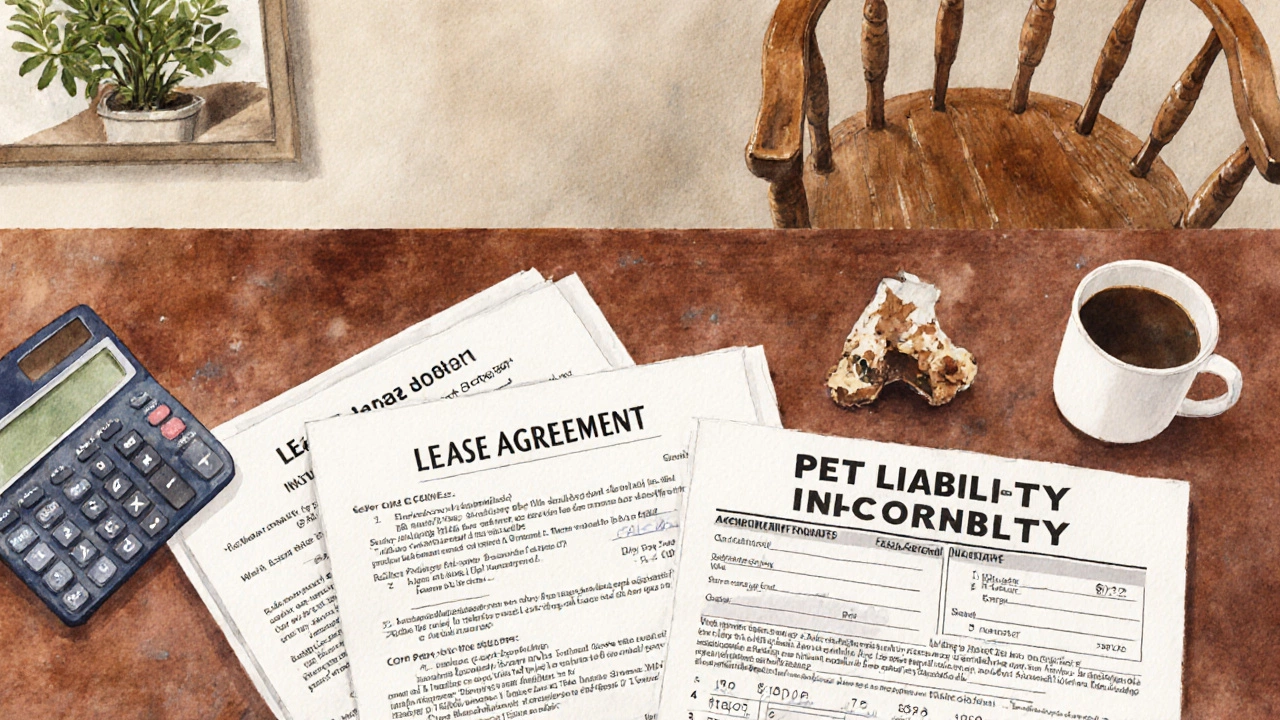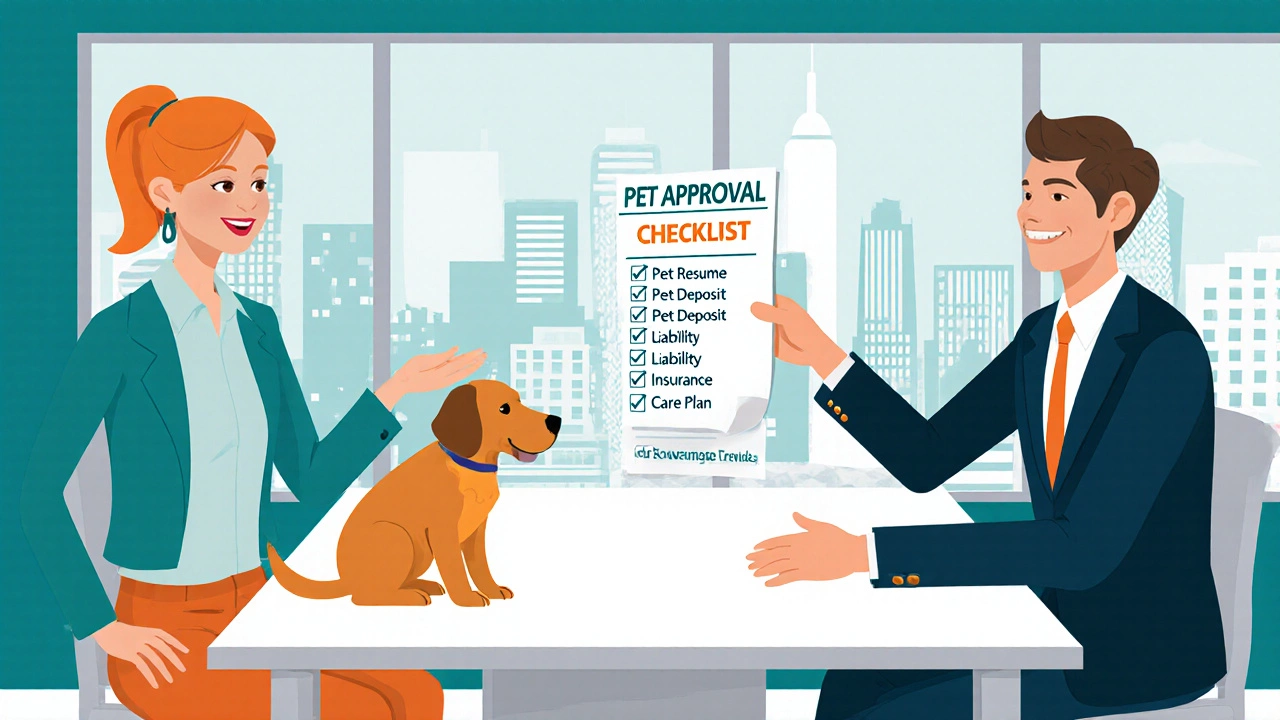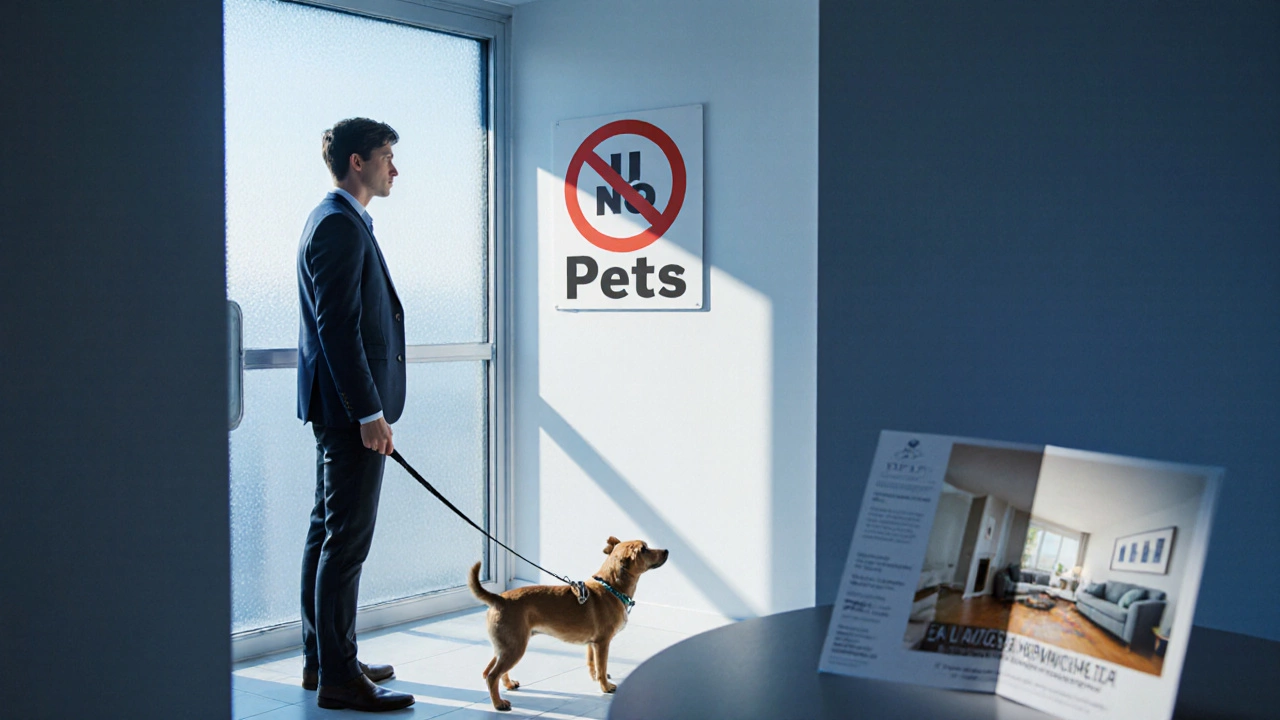Pet Rental Cost Calculator
Estimate Your Pet-Related Costs
Your Estimated Pet Costs
Pet Deposit: $0
Pet Fee: $0
Cleaning Costs: $0
Total Pet Costs: $0
Compared to Security Deposit: $0
Tip: Offering a pet care plan and insurance can reduce your deposit by up to 20%.
When you’re hunting for a rental, the first thing most tenants wonder is: pet policy. Why do some landlords flat‑out refuse cats or dogs? The answer isn’t just about a personal dislike for fur; it’s a mix of financial, legal and practical concerns that can make a landlord think twice before signing a lease with a pet in tow.
Quick Takeaways
- Landlords see pets as a potential source of extra cost: cleaning, repairs, and insurance.
- Liability and legal compliance add layers of risk for property owners.
- Noise, damage and neighbour complaints are the top reasons for pet restrictions.
- Tenants can improve their odds by offering pet deposits, references and a clear pet care plan.
- Understanding the landlord’s perspective helps you negotiate a win‑win pet agreement.
What Drives a Landlord’s Reluctance?
Landlord is the property owner who rents out a Rental Property. Their primary goal is to protect the investment and keep cash flow steady.
Pet‑related worries break down into three pillars:
- Financial exposure - extra cleaning, repairs, and potential higher insurance premiums.
- Legal liability - responsibility for animal‑related injuries or violations of local ordinances.
- Operational hassle - handling noise complaints, wear‑and‑tear, and neighbour relations.
Each pillar feeds the next, creating a cascade that can turn a seemingly simple pet request into a costly headache.
Financial Impact: Cleaning, Repairs, and Fees
The biggest line‑item on a landlord’s budget is turnover cost. When a tenant moves out, cleaning and repainting can easily hit $1,000 to $2,500. Add a pet, and that number climbs.
Typical extra costs include:
- Pet Deposit - a refundable sum (often $300‑$500) held against damage.
- Pet Fee - a non‑refundable charge (usually $100‑$250) covering extra cleaning.
- Professional carpet cleaning or upholstery shampoo, which can add $150‑$400 per unit.
- Repair of scratched floors, dented doors, or chewed baseboards - average $200‑$800 depending on severity.
These numbers are why many landlords ask for a higher security deposit or outright reject pets.
Legal & Liability Concerns
Every jurisdiction has its own rules about animals in rental housing. In New Zealand, the Animal Welfare Act 1999 states that owners must prevent their pets from causing a nuisance or injury. If a pet bites a neighbour, the landlord can be named in a civil suit, especially if the lease didn’t clearly limit pet ownership.
Insurance is another piece of the puzzle. Standard landlord insurance policies may exclude coverage for animal‑related damage unless the tenant pays an additional Pet Liability Endorsement. That endorsement can raise the annual premium by 5‑10%, a cost landlords often pass on to tenants or avoid entirely.

Property Damage & Ongoing Maintenance
Pets, especially larger dogs, are naturally inclined to:
- Leave hair and dander, which can trigger allergies for future tenants.
- Mark territory, leading to stubborn stains on carpets and walls.
- Chew on fixtures - think wooden doors, blinds, and garden gates.
These issues translate into higher turnover time because landlords must deep‑clean or replace materials before the next lease starts. A study by the New Zealand Rental Association in 2023 showed that units with pets had an average vacancy period 7 days longer than pet‑free units, directly affecting cash flow.
Noise, Neighbours, and Community Complaints
Even a well‑behaved pet can become a source of friction. Barking dogs, especially in high‑rise apartments, are a common trigger for neighbour complaints. According to Auckland Council’s 2022 noise complaint report, 42% of residential noise complaints involved pets.
Landlords fear that repeated complaints could lead to:
- Formal disputes that require mediation.
- Potential fines from the local council.
- Depreciation of the property’s reputation as a “quiet” rental, making it harder to attract future tenants.
These factors push many owners to adopt a ‘no‑pet’ stance as a protective measure.
How Tenants Can Reduce Landlord Anxiety
If you’ve already found a place you love but the landlord is hesitant, you can flip the script by showing that you’ve thought through the risks.
- Offer a higher pet deposit. Demonstrating financial responsibility eases the landlord’s concerns about damage.
- Provide pet references. A letter from a previous landlord or a vet confirming good behaviour and health carries weight.
- Present a pet care plan. Outline daily walks, training sessions, and how you’ll manage shedding or waste.
- Show proof of pet insurance. Many insurers now offer policies that cover property damage, which can be added to the lease.
- Agree to a pet addendum. This is a separate legal document that details pet rules, fees, and the tenant’s obligations.
Doing the leg‑work not only boosts your credibility but also gives the landlord a clear framework to manage risk.

Getting Pet Approval: A Practical Checklist
| Step | What to Provide | Why It Helps |
|---|---|---|
| 1 | Pet Resume (age, breed, vaccination records) | Shows responsible ownership |
| 2 | Pet Deposit or additional security | Covers potential damage costs |
| 3 | Pet Liability Insurance proof | Reduces landlord’s legal risk |
| 4 | Reference letter from previous landlord | Provides real‑world track record |
| 5 | Written pet care plan (walks, grooming, waste disposal) | Assures minimal disturbance |
Present this checklist during the lease negotiation. Landlords often appreciate the structured approach and may be more willing to sign a pet addendum.
When a Landlord Still Says No
Sometimes, despite all your preparations, the landlord’s policy remains firm. In those cases, consider these alternatives:
- Look for pet‑friendly listings on dedicated portals such as Rent.com.au or local NZ sites.
- Negotiate a shorter lease term to test the arrangement.
- Offer to pay a higher monthly rent that covers the perceived risk.
- Consider subletting a pet‑friendly unit if your lease allows it.
Remember, a landlord’s primary duty is to protect their asset. Finding a match where both parties feel secure is the key to a happy rental experience.
Frequently Asked Questions
Can a landlord charge both a pet deposit and a pet fee?
Yes. A pet deposit is refundable and covers damage, while a pet fee is non‑refundable and offsets cleaning costs. Both are legal in most NZ jurisdictions as long as they are disclosed in the lease.
Does pet insurance replace a pet deposit?
Usually not. Insurance covers liability and accidental damage, but landlords still prefer a deposit as a direct guarantee.
Are there any legal limits on pet fees in Auckland?
Auckland doesn’t set a statutory cap, but fees must be reasonable and disclosed. Excessive or hidden charges could be challenged under the Residential Tenancies Act.
What if my pet causes damage after I move out?
The landlord can deduct repair costs from your pet deposit. If the damage exceeds the deposit, they may pursue you for the remaining amount.
How can I prove my pet is well‑behaved?
Provide a recent vet health certificate, a letter from a previous landlord, and any training or obedience class records.
Understanding the landlord’s perspective turns a “no pets” sign into a negotiation point. By addressing cost, liability, and inconvenience head‑on, you give yourself the best shot at securing a pet‑friendly lease.
